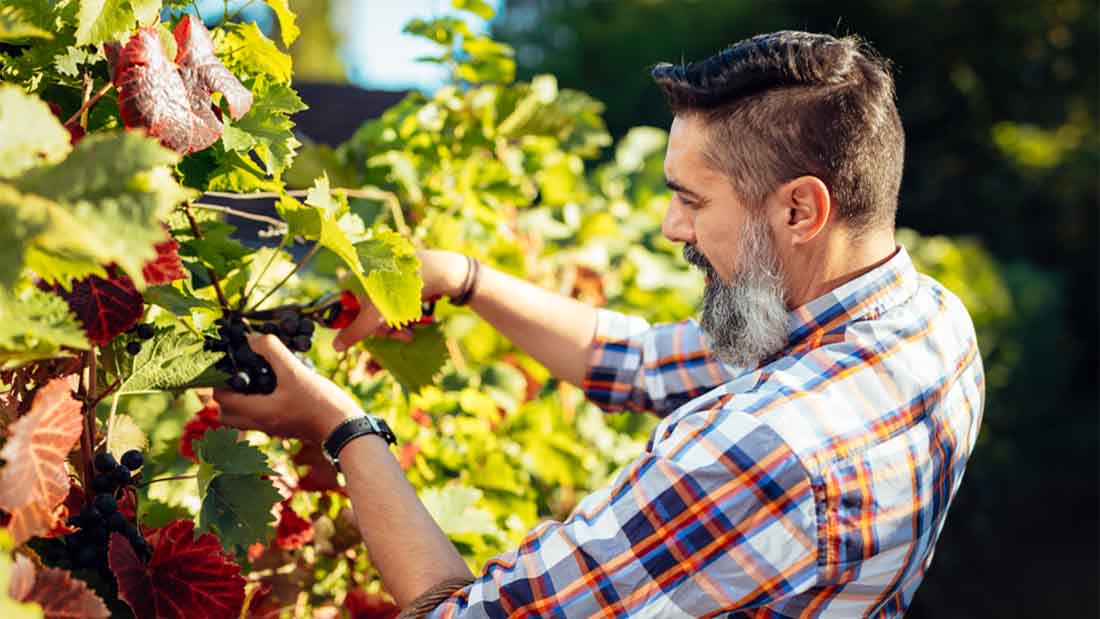
24 Sep How Certain Aspects Affect The Flavour of the Wine You Drink
Many aspects affect wine flavour. Winemakers do many things that affect the resulting liquid’s flavour, apart from natural differences in grapes. While most people know that aging wines in oak barrels affect their flavour, producers use several other techniques to make better wines. Here we look at what they are:
1. Date of Harvest
At what point harvesters pick the grapes matters a lot, and it is one of the most crucial aspects affecting a wine. Grapes picked earlier will produce wines with lower alcohol and acidity levels. These wines also tend to have a greener and lighter aroma and flavours and more bitter tannin. If the grapes are harvested later in the season, the resulting wine will be sweeter with a subdued tannin, with lower acidity levels.
Sometimes, when grapes are picked too late, they have to go through an artificial acidification process not to taste excessively flat or flabby. In some instances, the wines will have to be watered back to decrease alcohol concentration in them. This is why you might have noticed that many commercial wines have similar (13.5%) ABV levels.
The weather is another factor that affects a wine’s flavour. If the grape-growing region experiences unprecedented bad weather towards the growing season’s end, it can adversely affect the vintage. In areas with cooler climates such as Oregon, Burgundy and Northern Italy, where rain is forecasted, some winemakers prefer hedging their chances and pick their grapes before they have ripened optimally.
2. Skin Contact and Cold Soaking Wine
Skin contact or maceration time and cold-soaking are standard terms that winemakers use. These terms are related to the duration for which the grape skins are in contact with the juice during the time it takes to convert into wine. This process takes place before alcohol forms in the liquid. When the grapes are kept cold, it prevents the yeast from fermenting.
The cold soaking process catalyses and boosts fruit flavours and colour from the grape skins without extracting the bitter tannin. The total time that grape skins touch a wine is the maceration time. To extract their flavour and colour, winemakers may macerate their wines for between 28-50 days. This timeframe decides the wine’s richness and opacity. Typically, red wine fermentation takes about two weeks.
3. Cool Fermentation Vs Hot Fermentation
Fermentation temperature also affects a wine’s colour and flavour. Typically, cool and cold fermentations are used in rosé and white wine production. Cooler temperatures (6-10 °C) help preserve a wine’s delicate aromas. The aroma compounds may lose their volatility in the hot fermentation process, where further reactions occur. It’s why the temperature at which you serve wines out of bottles can affect their taste.
Hot fermentation (26-37 °C) also causes colour and flavour changes in wine as the yeasts start to metabolise, producing alcohol. Red wines are fermented at warmer temperatures, and they help increase tannins and colour. Some wine producers use warm fermentation methods on white wine, and this non-interventionist approach is in line with a vintage’s condition.
4. Punch Down and Pump Over
A Punch Down is a delicate wine stirring method that helps prevent the grape skins from excessive extraction with almost no oxygen added during fermentation. Manual methods are used in punch downs, and most non-interventionist winemakers use them.
A Pump Over helps extract more tannins in wine, depending on the frequency and force used. Some pump-over systems offer a vigorous stir-up, while others are only wine sprinklers. The pump-over device is also used in commercial operations where more significant amounts of oxygen are required to be added to the tanks.
5. Steel Tank and Oak-Aging
Steel tanks are widely used for aging zesty white wines such as Pinot Gris and some red wines. Because steel tanks limit the wine’s exposure to oxygen, it helps maintain freshness.
Oak aging adds a vanilla flavour to wine but does more than that. Because wine stored in oak is exposed to more oxygen over time, it helps increase fruitiness as the tannin decreases. Wines stored for several years in oak have nuttier flavours.
These are some aspects affecting the flavour and colour of wines. For more information about the perfect wine racks and our custom wine cellar solutions, call Signature Cellars on 1300 570 636. Our team is here to help you design the ideal custom wine cellar for your needs.
Thanks for reading,
Neil Smallman
Signature Cellars
1300 570 636




No Comments